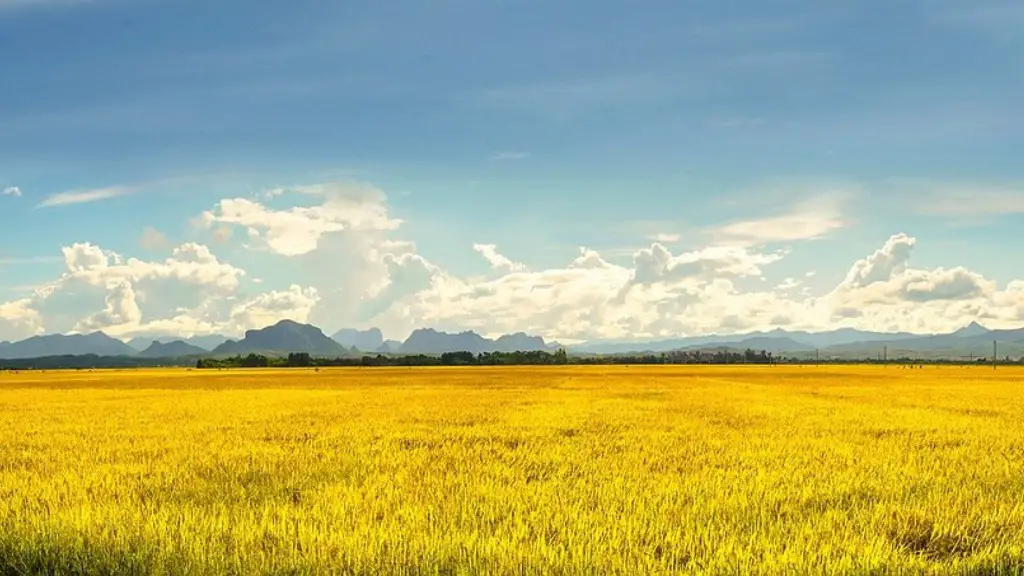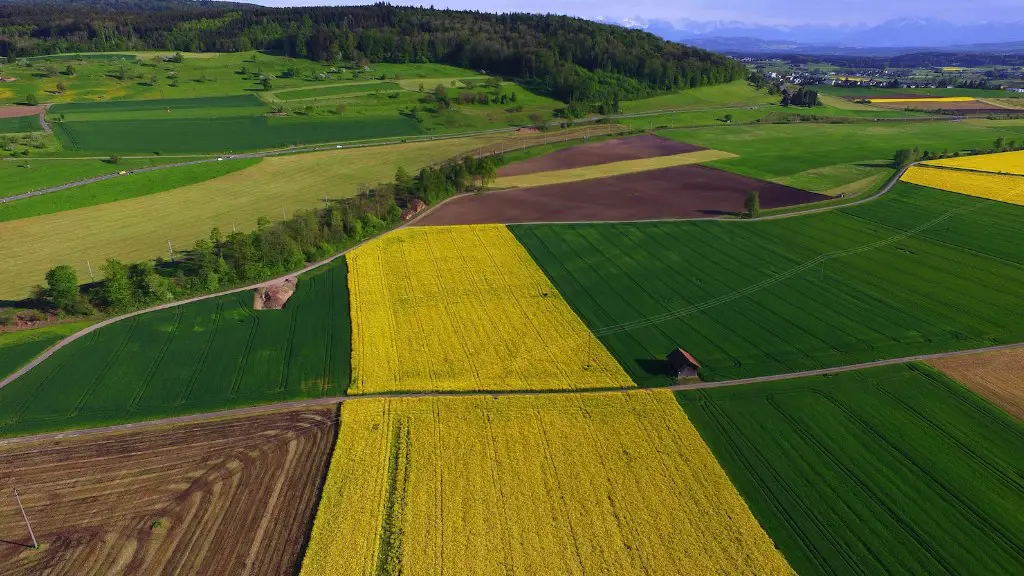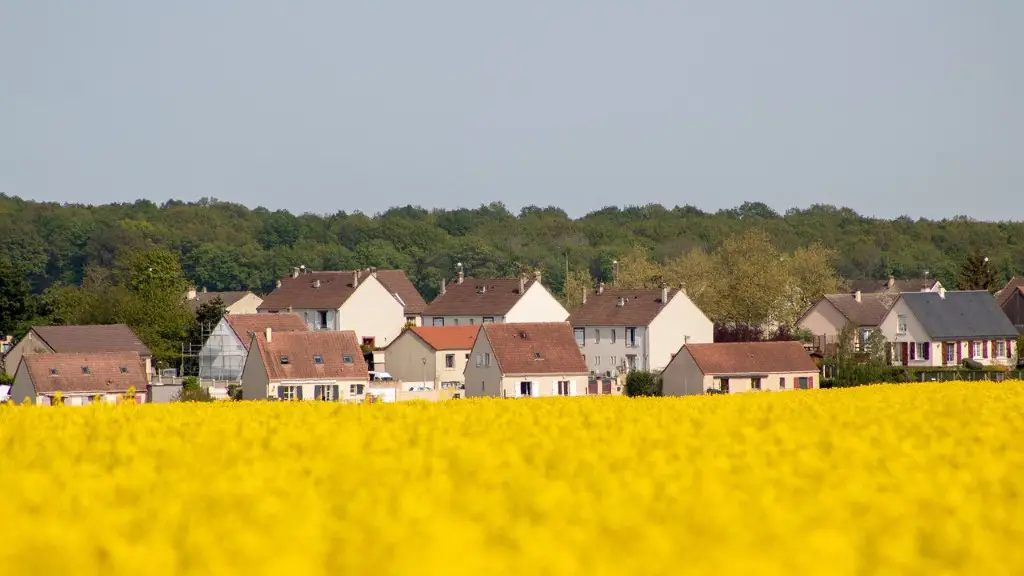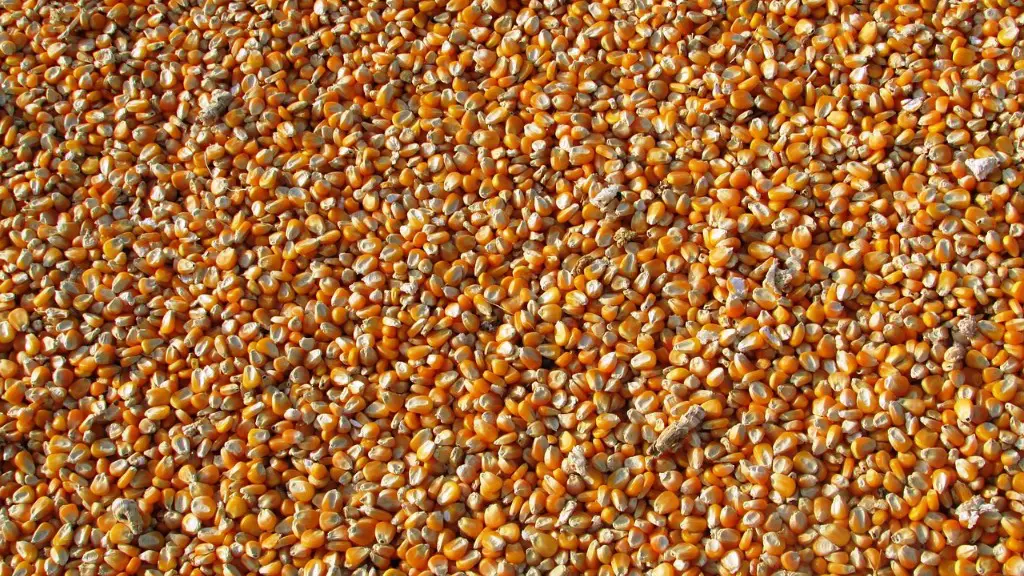The industrial revolution was a period of great change for agriculture. With the introduction of new technologies and the growth of industry, agriculture began to change. Farm size began to increase and new ways of farming were developed. These changes had a profound impact on the way that agriculture was carried out and the way that crops were grown.
The industrial revolution brought many new inventions and innovations that greatly affected agriculture. One of the most significant changes was the development of new machines that replaced manual labor, such as the cotton gin and the reaper. This increased productivity and efficiency, but also led to widespread unemployment as workers were replaced by machines. The industrial revolution also created new markets for agricultural goods and increased demand for food. This led to a boom in the agricultural industry, as farmers began to produce more food to meet the new demand. However, the industrial revolution also had some negative effects on agriculture, such as causing environmental pollution and damaging the soil.
How did the Industrial Revolution lead to the agricultural revolution?
The industrial revolution led to a shift in how food was produced, with machines doing much of the work. Farmers could produce more food with less manpower, and the use of fertilizers and pesticides became widespread, which helped to increase crop yields even further. This also led to a shift in how food was distributed, with more food being available to more people.
The new farming techniques that led to increased food production also led to an increase in population. This, in turn, led to improved health for the people. The new farming techniques also led to an enclosure movement, which was a movement towards privatizing land ownership.
Did the Industrial Revolution improve agriculture
The Industrial Revolution was a turning point in many aspects of human life, and the Agricultural Revolution was one of them. With new technologies such as the seed drill and the Dutch plough, farmers were able to increase their productivity and output, leading to a higher standard of living for many people.
The Industrial Revolution was a time when the economy shifted from an agrarian economy to a manufacturing economy. This meant that products were no longer made solely by hand, but by machines. This led to increased production and efficiency, lower prices, more goods, improved wages, and migration from rural areas to urban areas.
What are three 3 major problems of industrial agriculture?
While large-scale, conventional farming can yield high production levels, it also contributes to climate change, pollutes air and water, and depletes soil fertility. This type of farming focuses on intensive single crop production, mechanization, and depends on fossil fuels, pesticides, antibiotics, and synthetic fertilizers.
The agricultural revolution had a variety of consequences for humans. It has been linked to everything from societal inequality—a result of humans’ increased dependence on the land and fears of scarcity—to a decline in nutrition and a rise in infectious diseases contracted from domesticated animals.
What are 3 benefits of industrial agriculture?
Despite the many benefits of industrial agriculture, there are also several drawbacks. These include:
The negative impact on the environment, including water and air pollution, soil degradation, and the loss of biodiversity.
The heavy reliance on fossil fuels and other non-renewable resources.
The potential for negative health effects from exposure to pesticides, herbicides, and other chemicals used in industrial agriculture.
The potential for negative social effects, such as the displacement of small farmers and the exploitation of farm workers.
New tools and the advancement of old ones were an important factor in the Agricultural Revolution. The plough, seed drill, and threshing machine improved the efficiency of agricultural operations, making it possible to produce more food with less labor. This allowed for the growth of cities and the rise of civilizations.
What was one of the most important effects of the Agricultural Revolution
The Agricultural Revolution was a period of significant Agricultural development that took place throughout the world during the 18th and early 19th centuries. One of the most important developments of this time was the intensification of agricultural output through new farming techniques, specifically the development of crop rotation systems that included turnips and clover. This system, known as the Norfolk four-course rotation, was extremely effective in increasing yields and helped to make agriculture more efficient and productive.
The Agricultural Revolution was a period of time during which new crops and new methods of crop rotation were experimented with. These new farming techniques gave soil time to replenish nutrients, leading to stronger crops and better agricultural output. Advancements in irrigation and drainage further increased productivity.
What are some of the impacts of industrial agriculture?
The industrial agriculture system is not sustainable and is causing serious environmental problems. It needs to be changed to a more sustainable system that doesn’t use so much water, fossil fuels, and topsoil.
Industrial agriculture has made it possible to produce more food than ever before. However, it has also had a number of negative impacts on the environment and human society. These impacts include:
-Air pollution from pesticides and fertilizers
-Water pollution from manure and pesticides
-Soil erosion from intensive farming practices
-Habitat destruction from conversion of land to agricultural use
-Increased use of fossil fuels for farming machinery and transportation
All of these impacts have a negative effect on the environment and human health. Therefore, it is important to be aware of the potential drawbacks of industrial agriculture before deciding whether or not to support it.
What are some examples of industrial agriculture
Industrial agriculture, especially in the central United States, mostly produces commodity crops like corn and soybeans. These crops are used to make the processed foods that dominate the US diet, with serious—and enormously costly—health impacts.
Processed foods are linked to a host of health problems, from obesity and diabetes to heart disease and cancer. They are also a major contributor to the rising costs of healthcare in the United States.
Eating a healthy diet is one of the best ways to prevent chronic disease, and it starts with eliminating processed foods from your diet. If you’re eating a lot of processed foods, try slowly replacing them with whole, nutritious foods. Your body will thank you for it!
The Agricultural Revolution was a period of unprecedented growth in agricultural production and technological advancement. This period saw the development of new agricultural practices, the growth of a coherent and loosely regulated agricultural market, and the rise of rural-to-urban migration. The increase in agricultural production and technological advancements during the Agricultural Revolution contributed to unprecedented population growth and new agricultural practices, triggering such phenomena as rural-to-urban migration, development of a coherent and loosely regulated agricultural market, and the rise of a new class of urban dwellers.
What were 3 positive changes from the Agricultural Revolution?
The Second Agricultural Revolution had a significant impact on both diet and population. The advances in food production led to better diets, longer life spans, and an increase in population. The increase in population in turn led to a greater pool of workers for industry, helping to spur on the Industrial Revolution.
The Agricultural Revolution of the 18th century was a major turning point in history that paved the way for the Industrial Revolution. New farming techniques and improved livestock breeding led to amplified food production, which allowed for a spike in population and increased health. The new farming techniques also led to an enclosure movement, which had a profound impact on British society.
Warp Up
The industrial revolution had a profound effect on agriculture. It led to the development of new machines and technology that allowed for more efficient farming practices. This in turn led to an increase in food production, which helped to feed the growing population. The industrial revolution also had an impact on the way that crops were grown, as new methods were developed that allowed for larger yields.
The industrial revolution affected agriculture in a number of ways. One obvious way is that it led to the development of more efficient farming techniques. The industrial revolution also brought about a change in the way that farm animals were raised.





